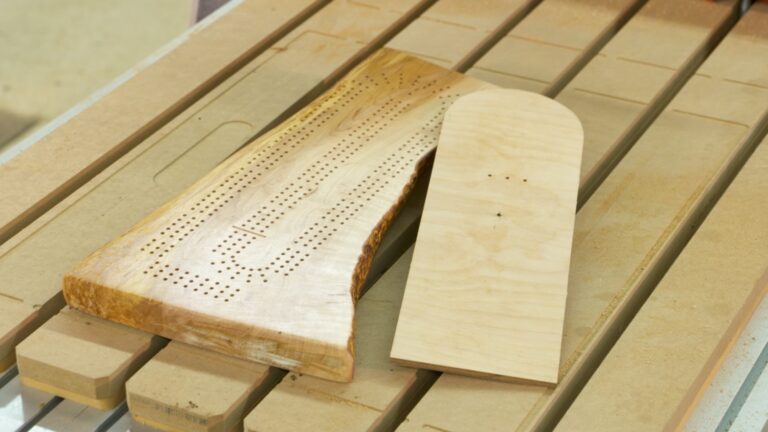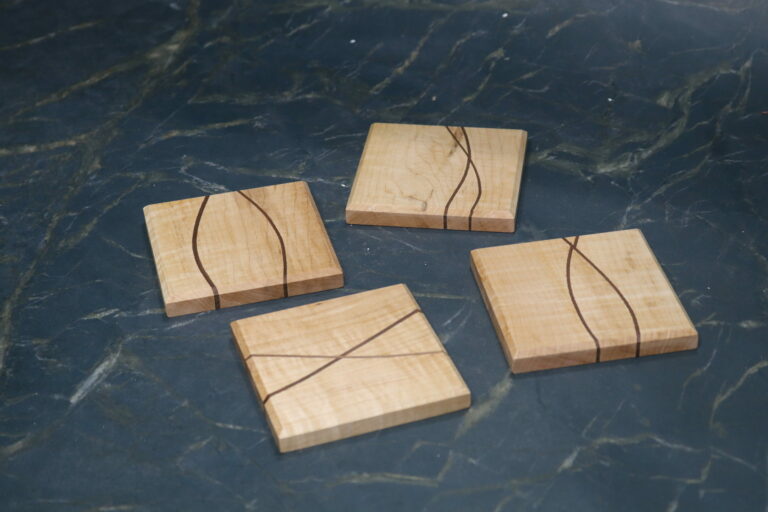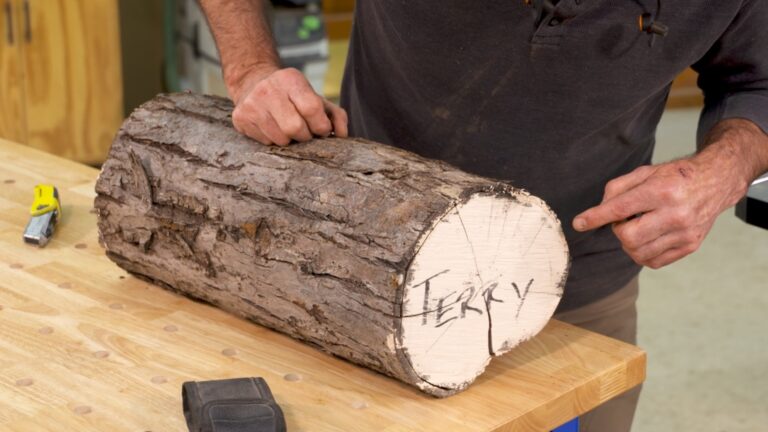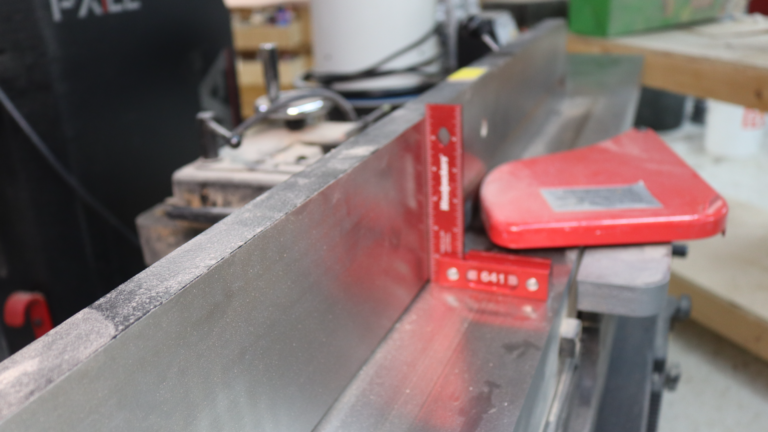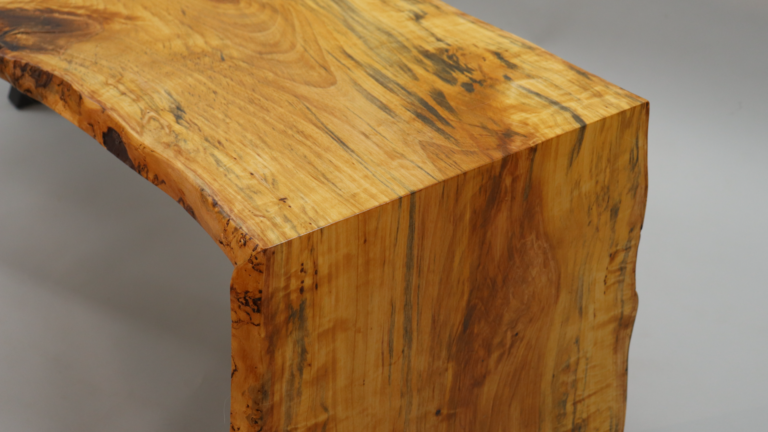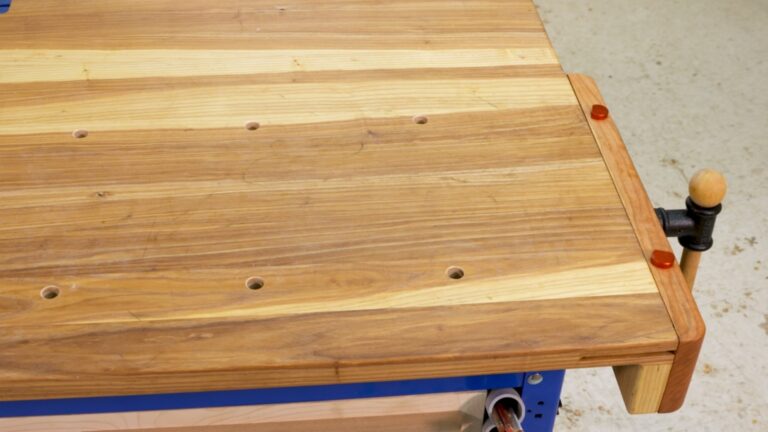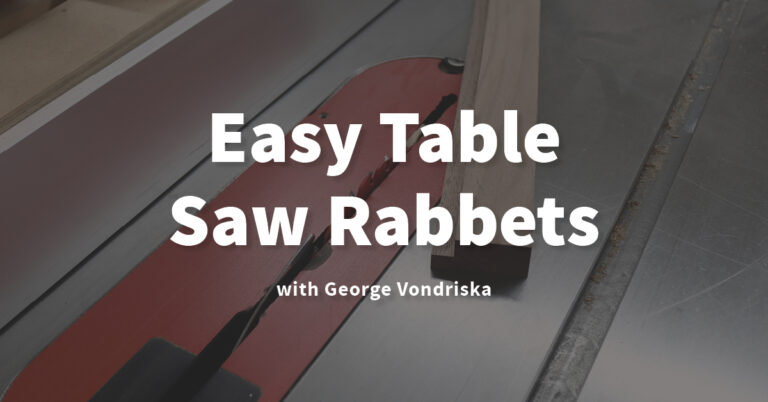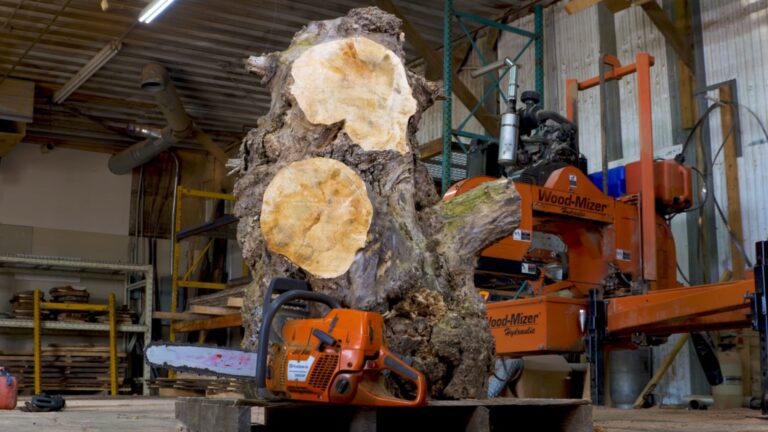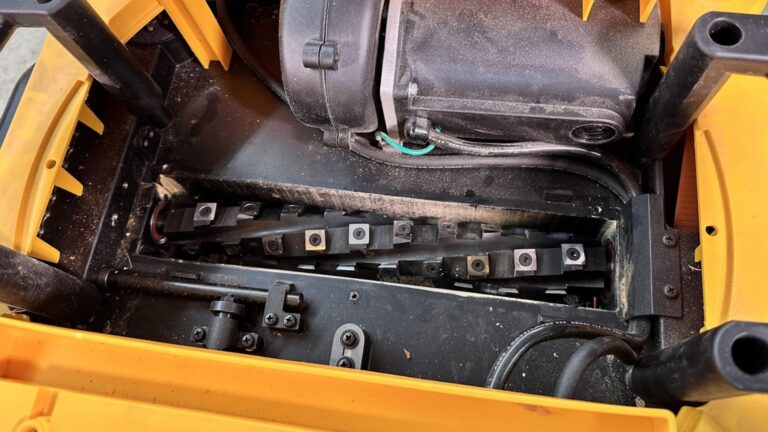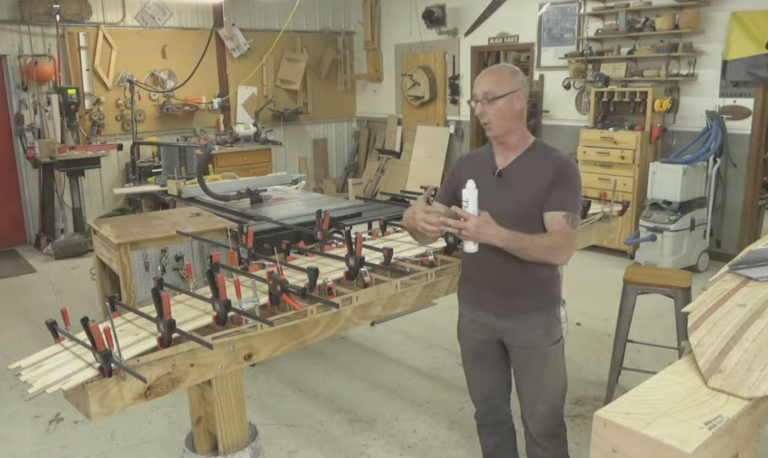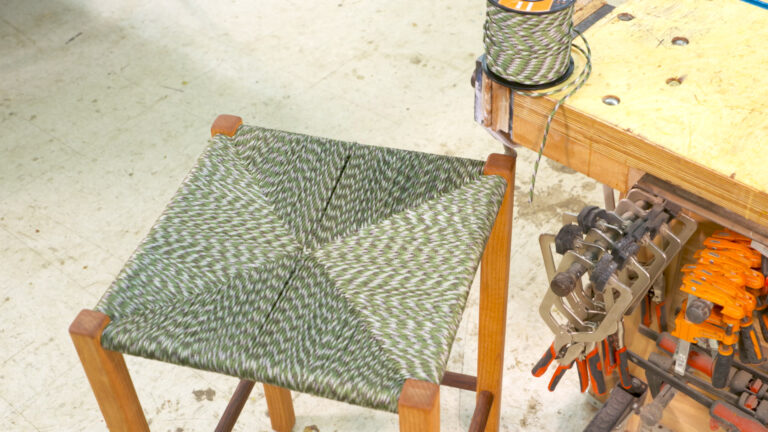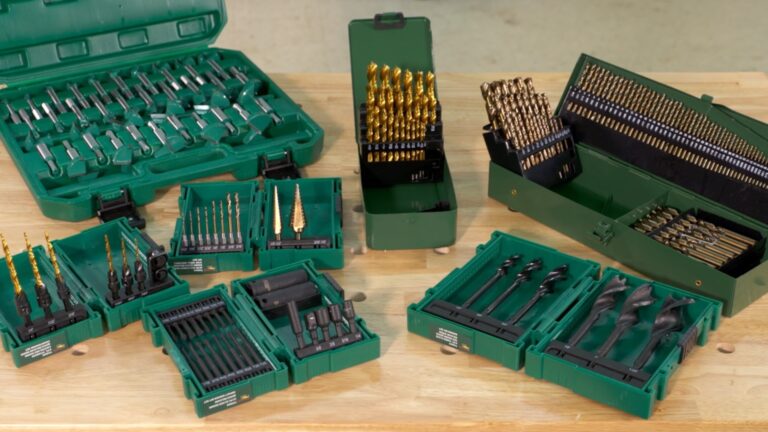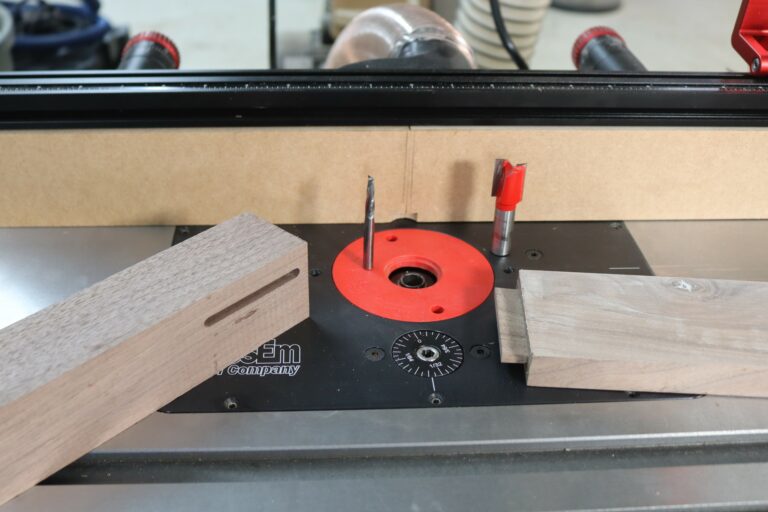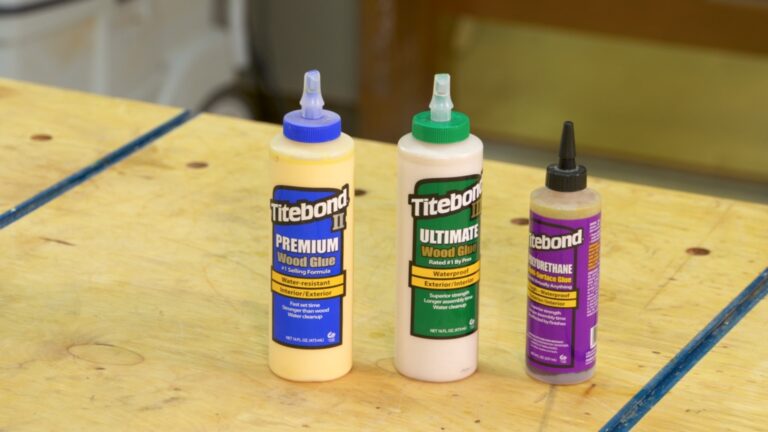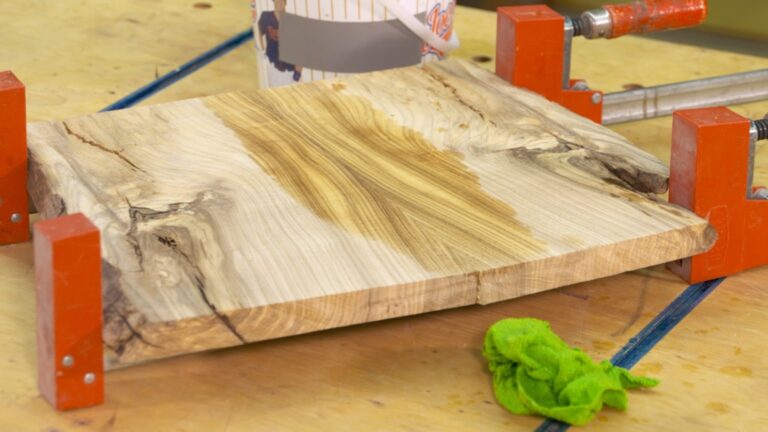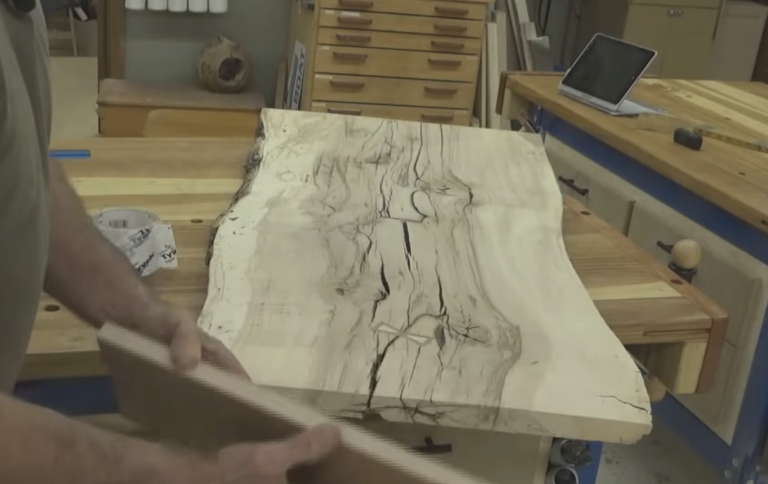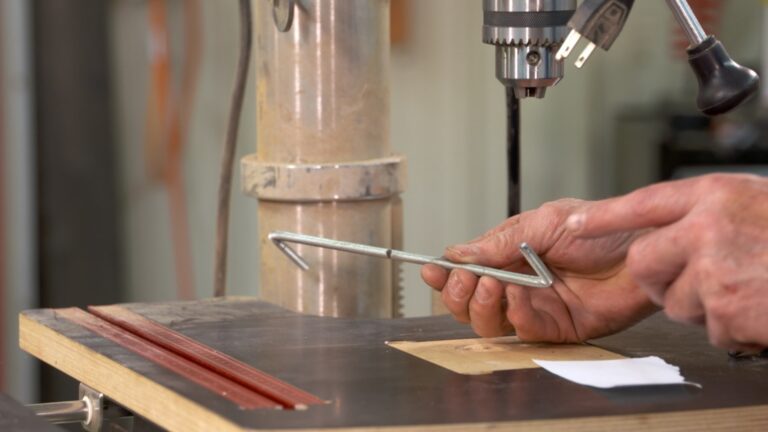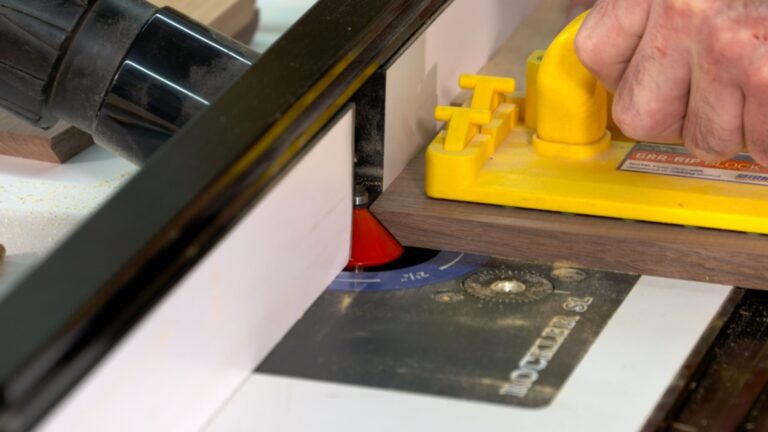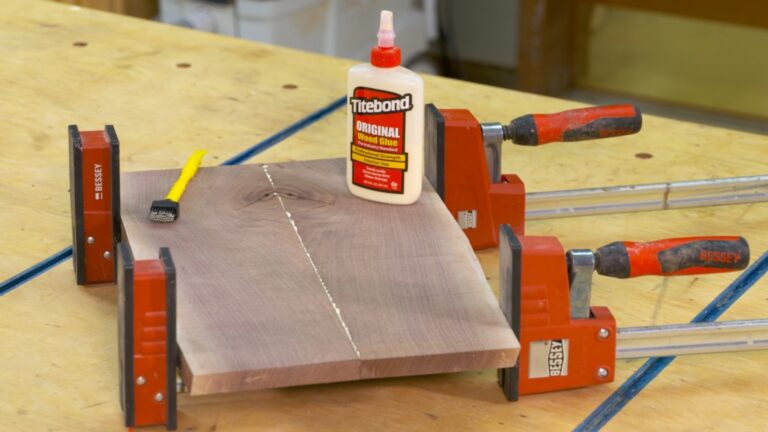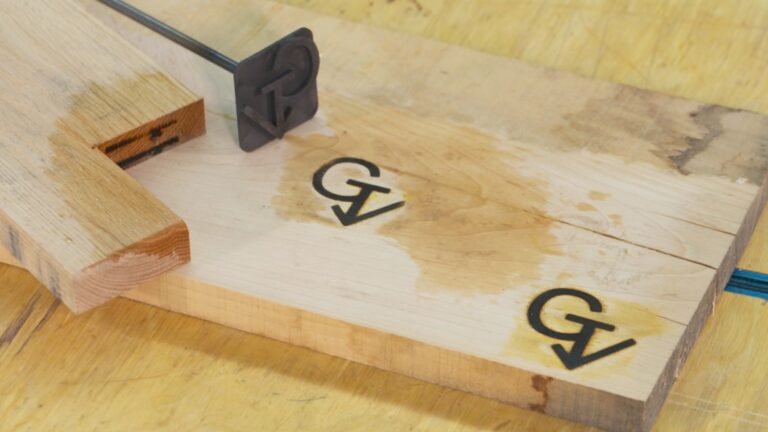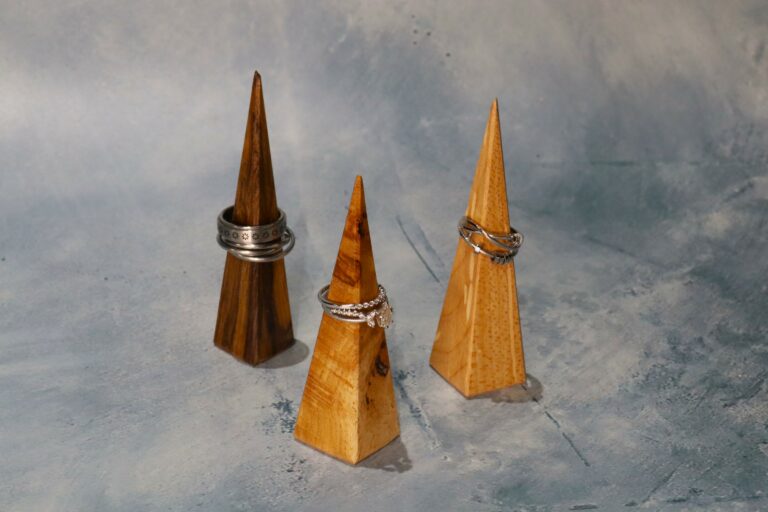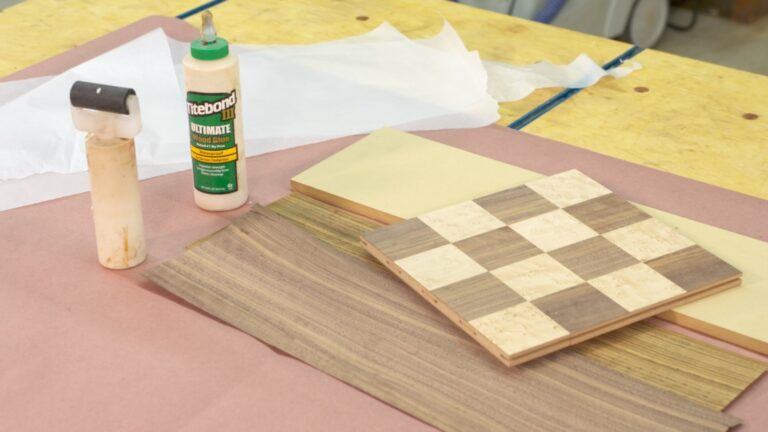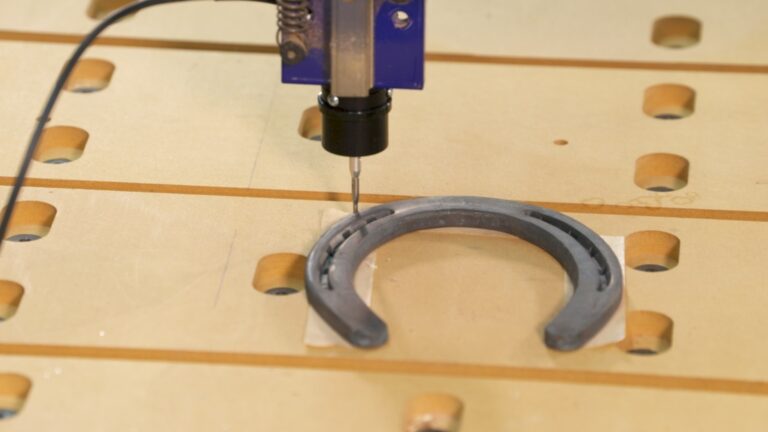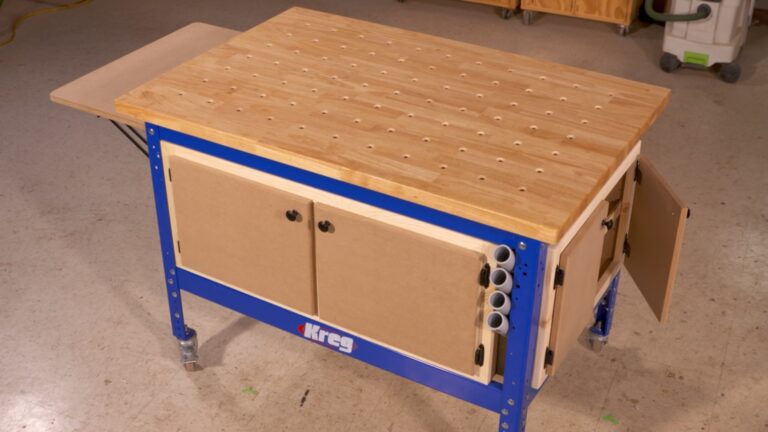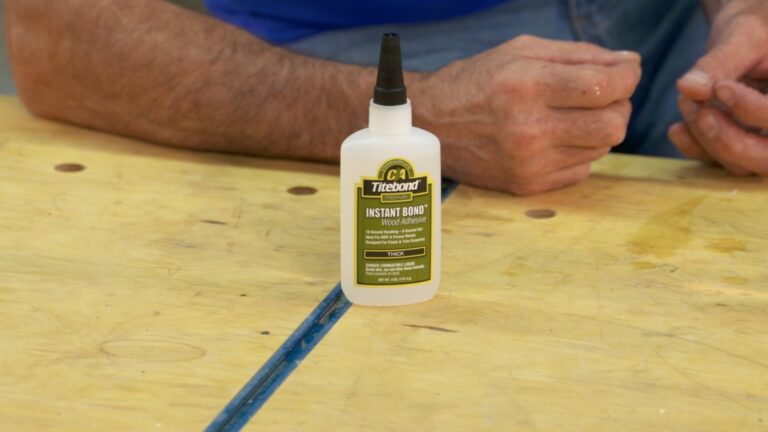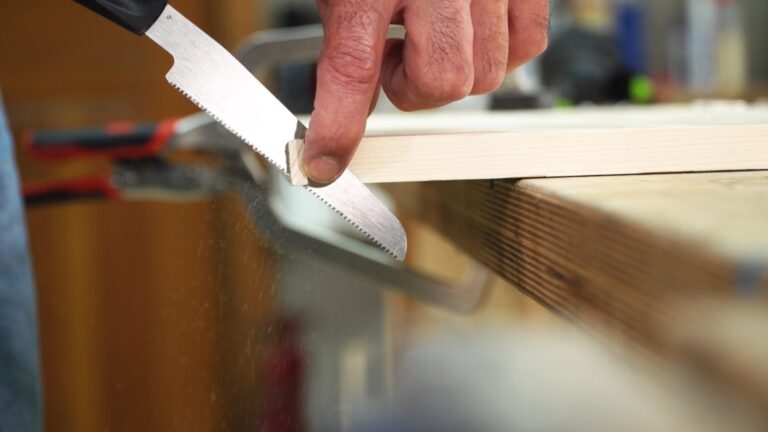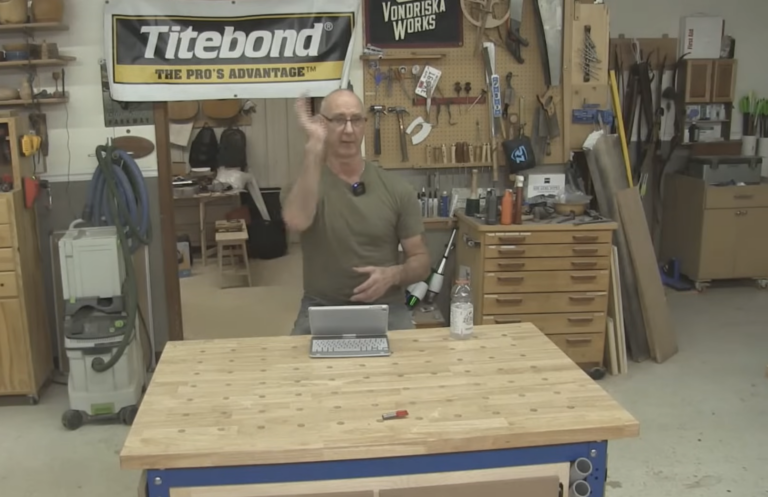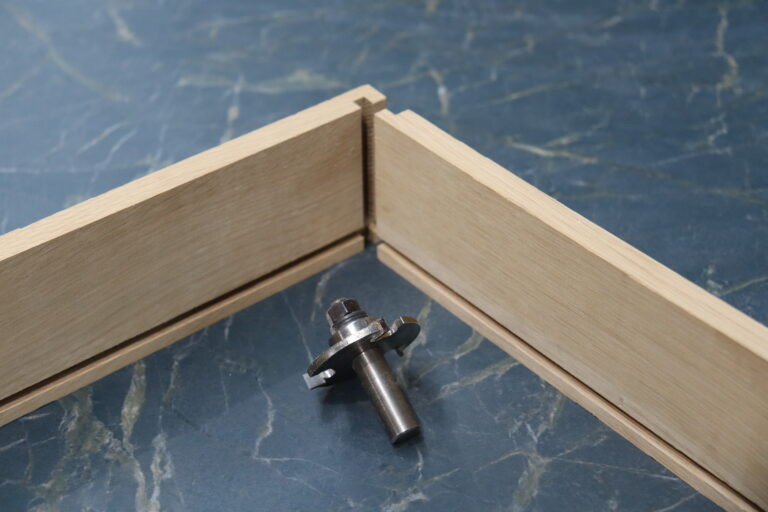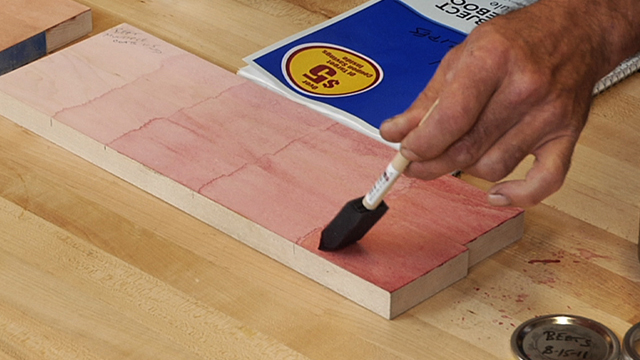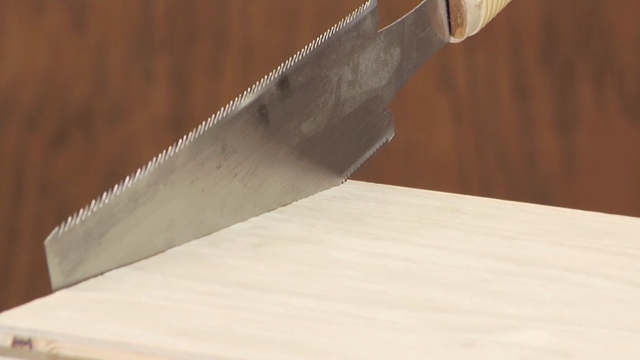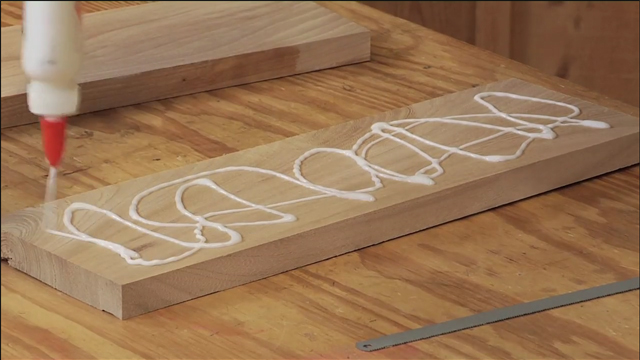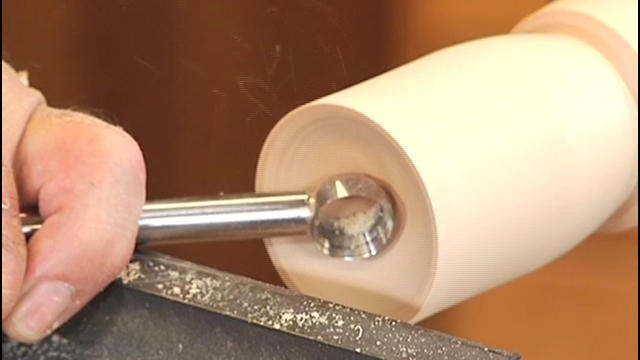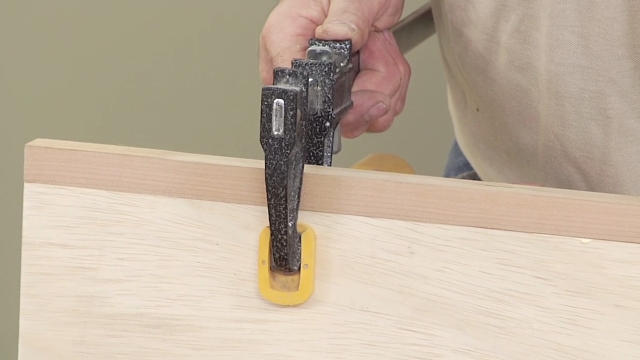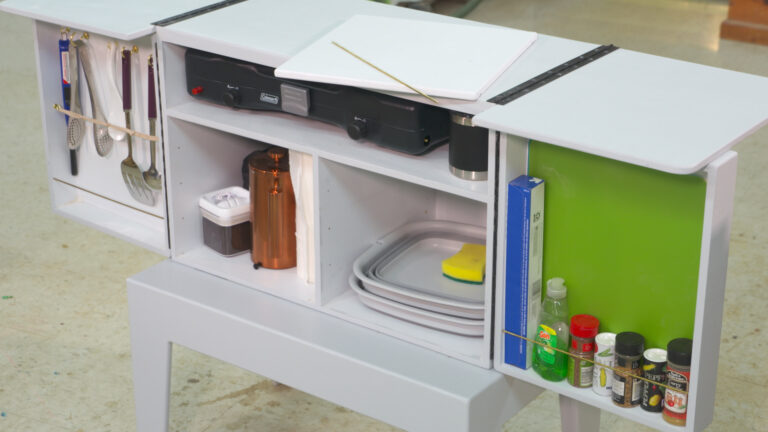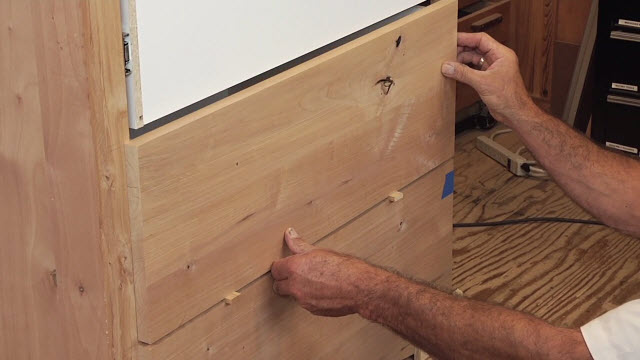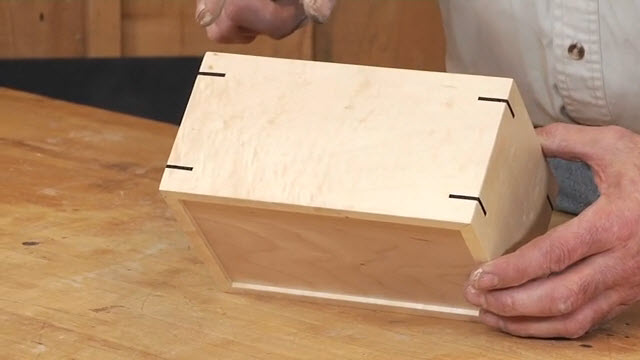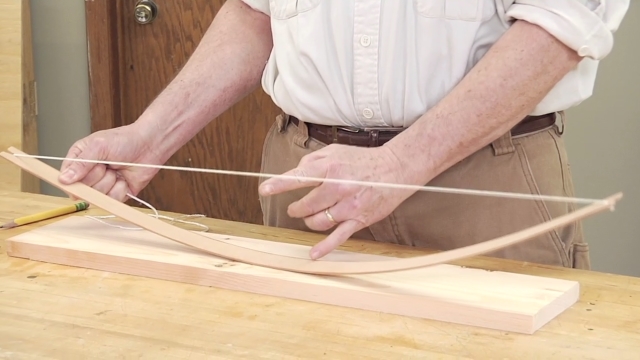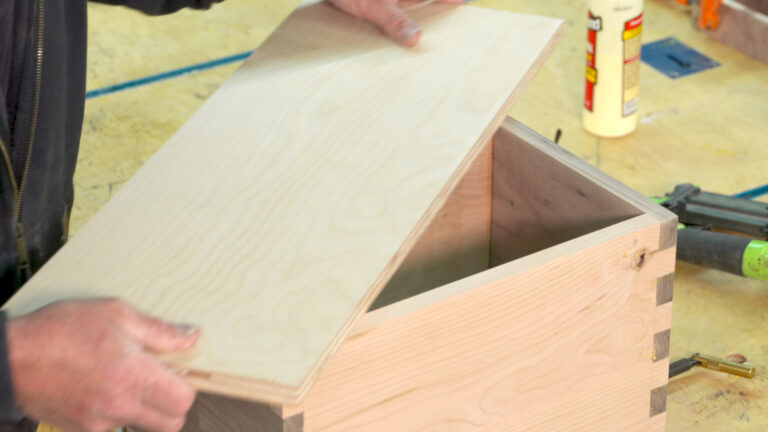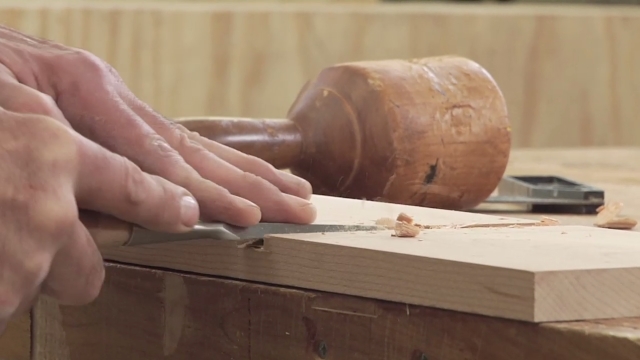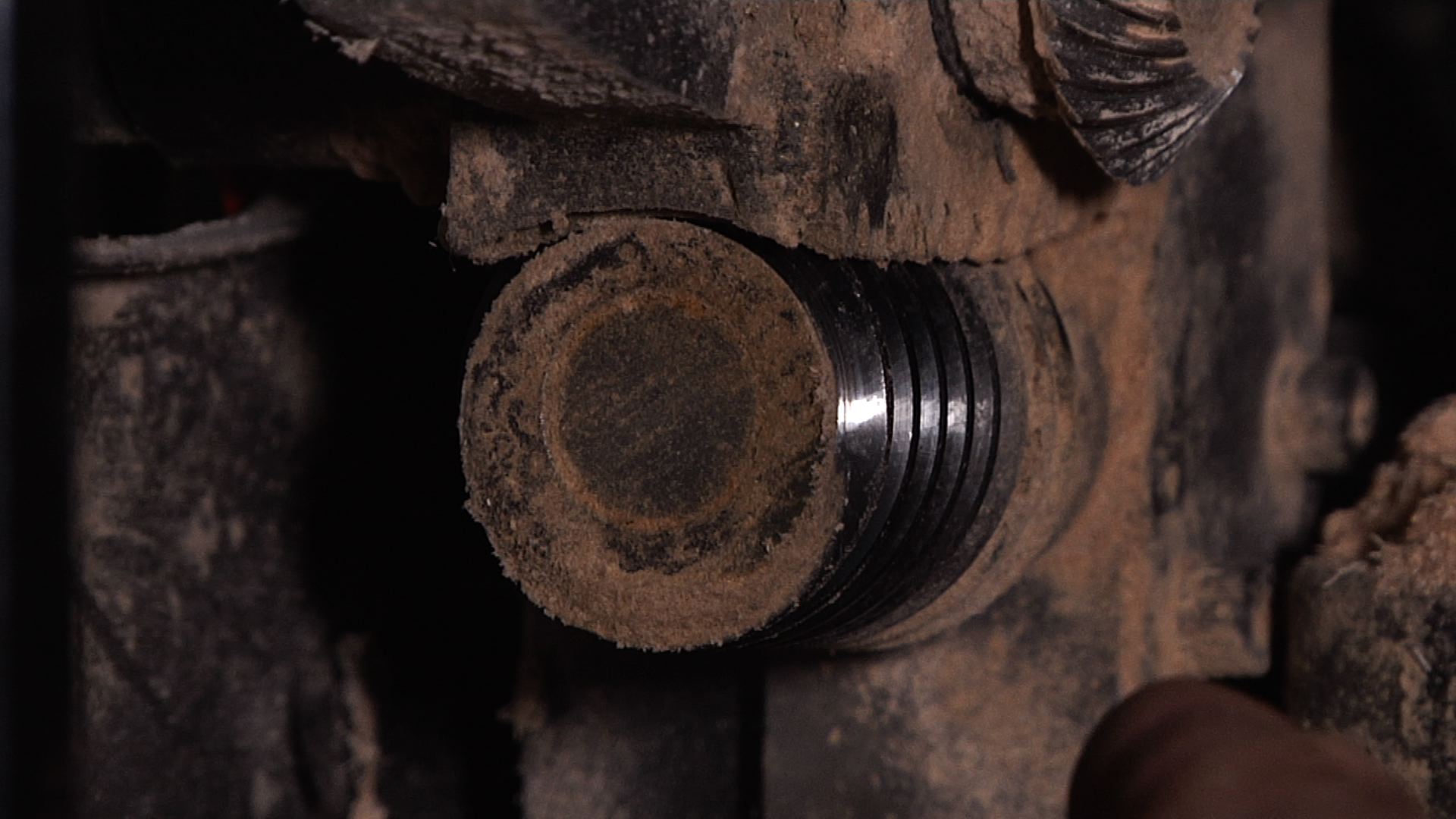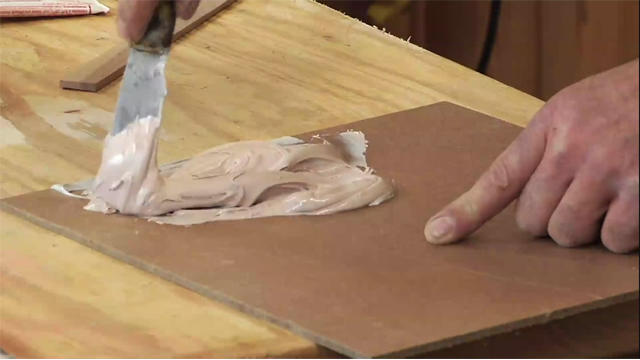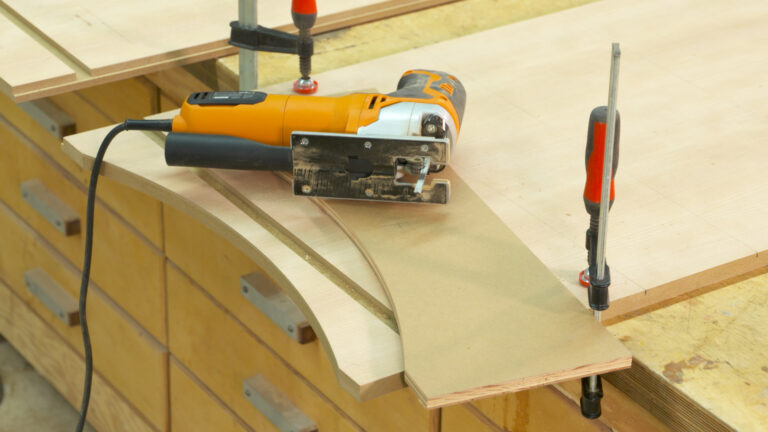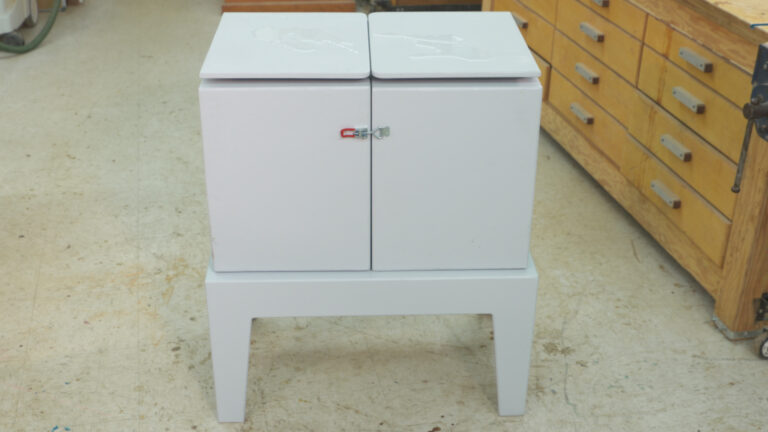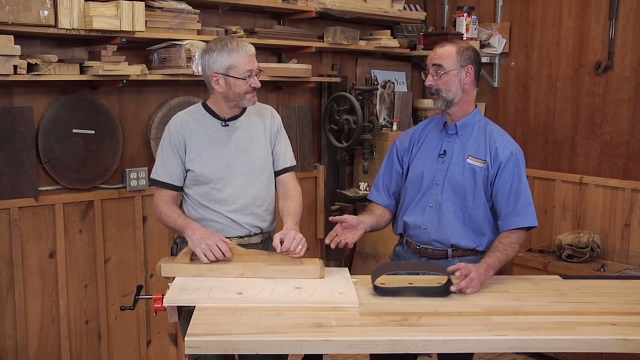
Edge Banding Trim Jig
George VondriskaThe banding you glue on your sheet should be slightly thicker than the sheet you use. Making it 1/16 in. oversize works well.
The trim jig I use fits on the base of a hand-held router equipped with a 3/4 in. straight bit. I made mine out of 1/2 in. x 6 in. x 12 in. mdf. Make the mdf base so that it will engage at least two of the screws from the router base. Locate the screw holes on the mdf by removing the plastic base from the router and tracing the screw locations. Drill and countersink the holes. You may need to get longer screws to hold the jig securely on the router. Cut an L-shaped corner out of the mdf. The inside corner of the L is where the router bit is located. A chunk of wood on top of the jig is a nice add-on that will make it easier to hold the jig.
The easiest way to set the depth is to gently lower the cutter until it kisses a piece of paper you’ve positioned under the bit. Your goal is to set the height of the cutter to the thickness of the paper above your work. The paper feeler gauge should be under the bit, but not under your shop made jig. Slowly lower the cutter until you can no longer slide the paper out from under the bit.
Using a piece of scrap, test the depth of cut. You don’t need banding on the scrap piece. Turn the router on, move the jig and router across the face of the piece, and check to see if the bit cuts into the material. This test indicates if the bit is too deep. If it does cut into the face you need to raise the bit. If it doesn’t, you’re ready for the next test cut. The second test needs to be done on a piece that has banding on it. Run the router and, with the shop-made base on the face of the sheet stock, allow the bit to cut into the banding. The banding should be flush or just a “finger nail catch” too high. If an excessive amount of banding is still proud of the sheet stock you need to lower the bit a little more and start the test process over again.
Once the depth of the bit is perfectly set, you’re ready to trim the banding. Hold the shop made base flat on the sheet stock and run the router down the length of the work. After the router work, a small amount of hand sanding will do the final clean up, and you’re done.
Explore videos by George Vondriska
You may be interested in
Premium Membership
Unlock exclusive member content from our industry experts.
- 24/7 Access to Premium Woodworking Videos, Projects, and Tips
- Step-by-Step Instructional Demos, Plans, and Tutorials
- 50% Off Video Downloads Purchased in the Woodworkers Guild of America Shop
- 2 Printable Woodworking Plans
Unlock exclusive member content from our industry experts.
- 24/7 Access to Premium Woodworking Videos, Projects, and Tips
- Step-by-Step Instructional Demos, Plans, and Tutorials
- 50% Off Video Downloads Purchased in the Woodworkers Guild of America Shop
- 2 Full-Length Video Downloads to Watch Offline
- 2 Printable Woodworking Plans
Gold Membership
$370 Value
Get everything included in Premium plus exclusive Gold Membership benefits.
- 24/7 Access to Premium Woodworking Videos, Projects, and Tips
- Step-by-Step Instructional Demos, Plans, and Tutorials
- 8 Full-Length Video Downloads to Watch Offline
- 3 Full-Length Woodworking Classes to Keep for Life
- 7 Printable Woodworking Plans
- Discounts on Purchase-to-Own Content in the Woodworkers Guild of America Shop
- Access to Ask the Expert Program
- Exclusive GOLD LIVE Streaming Events
